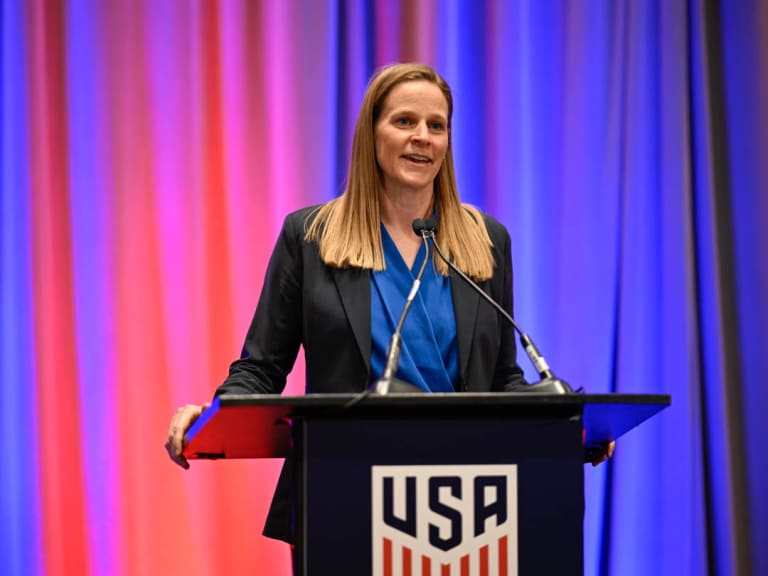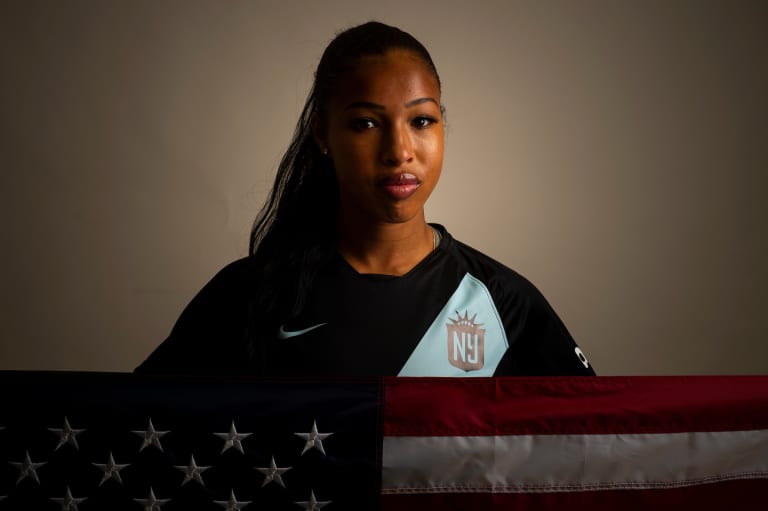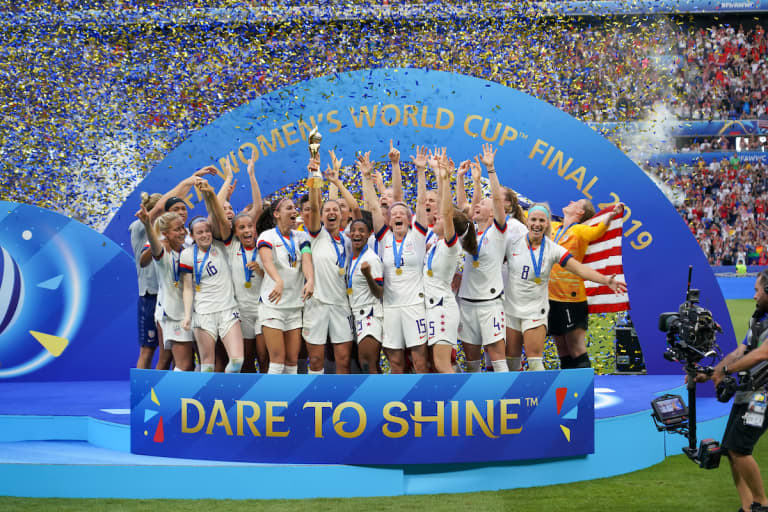Phrases like “historic” and “unprecedented” tend to get thrown around a lot when big announcements are rolled out. But the words truly do apply for Wednesday’s unveiling of new collective bargaining agreements for the US men’s and women’s national teams.

"A long journey"
An achievement, some would say decades, in the making, it's a groundbreaking arrangement marked by “identical compensation” in terms of pay, bonuses and benefits, even on FIFA’s infamously imbalanced prize money for World Cup participants – probably the first true case of “equal pay” across genders in international soccer.
“This is a critically important moment for our game,” U.S. Soccer president Cindy Parlow Cone told a conference call of more than 100 reporters on Wednesday afternoon, “and really will help set the future for what we're trying to work towards, in increasing access to our game, investing more heavily in the grassroots. And I know this is important to both player associations and all the players on our men's and women's team as well.
“It really was a long journey, but a really collaborative effort,” she added. “Hopefully the players and the players’ associations feel that we set a new tone with U.S. Soccer. We have entirely new leadership here at U.S. Soccer and we really wanted to set a new path and reset the relationship with both of our players and their player associations.”
"We're really proud of it"
Negotiating together at the same table with the federation for the first time ever, both of the national teams’ unions made significant concessions in pursuit of a better overall deal. It’s a balanced one that goes beyond improved contract terms to encompass new revenue-sharing arrangements, name, image and likeness (NIL) rights, health, vision and dental insurance, parental leave, childcare while on international duty and more.
“What we've accomplished is definitely a landmark in progress when it comes to gender equity,” said USWNT and Gotham FC forward Margaret ‘Midge’ Purce. “I think we set a new standard of value for women in the workforce.”
Most striking of all is the pooling and equal distribution of prize money from participation in their respective World Cups. That shift addresses FIFA’s drastic inequality of investment in the tournaments – in the last World Cup cycle, the last-place team in the men’s event received more money than the women’s winner, the USWNT – to an unprecedented extent.
“Certainly we saw that there was not going to be a way forward to a deal without equalization of World Cup prize money,” said Nashville SC and USMNT defender Walker Zimmerman. “And we looked at the numbers between the previous CBA, the CBA that we've agreed to now and recognize that, sure, there was a potential chance of making less money, no doubt about it.
“But we also believe so much in the women's team, we believe in the whole premise of equal pay. And ultimately, that was a big driving force for us, was to do something historic do something that no other team had done before and to really try and do this together … difficult conversations, a lot of listening, a lot of learning, and ultimately we came to this historic CBA and we're really proud of it.”

One Nation, One Team
In this shared outlook, the men who make Gregg Berhalter’s final roster might reap less coin from Qatar 2022 than they would’ve under prior CBAs; same for the women at the 2023 WWC in Australia/New Zealand. And the WNT have let go of the limited number of full-time contracts that once provided rare stability in the women’s game, to adopt the same ‘pay-for-play’ compensation system as the MNT.
They’re confident that a collaborative approach will grow the overall pie and create a unity of purpose that finally lives up to the federation’s current slogan for all its national team programs.
“I really do feel it is ‘One Nation, One Team,’” said Purce. “The sentiment is really strong.”
While the WNT’s previous CBA expired at the end of March, the MNT’s ran out more than three years ago amid an impasse in talks, leaving players in a frustrating limbo.
Thanks to persistent efforts by Parlow Cone – herself a distinguished US international in her playing days – and her USSF colleagues to turn the page from contentious negotiations of years past, that was recast from grievance to opening. That in turn was boosted by a wider cultural shift that’s brought gender equity to the forefront of the national conversation.
“The men were out of contract and the women were up for renewal. Since we hadn't finished the renewal with the men, it was an opportunity to put them on the same timeline of re-negotiations, which had never happened in the past,” explained Parlow Cone, who took over the presidency after Carlos Cordeiro’s resignation in March 2020 and outpaced Cordeiro to win re-election in February.
“So it was really our one opportunity that we've had to bring them together in one room to negotiate this. I think the other factors were just the moment that we're in, and the guys on this team really stepping forward and championing this, because this advancement doesn't happen without the men championing this.”
Only the beginning
Thus both national teams are betting on themselves, reckoning that they can earn more working together than in the separate fashion that was the status quo for decades. The federation is buying into that too, providing higher rates of compensation and revenue-sharing in order to end the litigation, frustration and recrimination that made so many headlines in recent years.
“Yes, we had some modeling that we had done. But it's not just the bottom line. It's the overall picture of it,” said Parlow Cone. “Especially with the revenue share and the commercial and sponsorship opportunities made possible by labor peace, and not only that, but real collaboration among all the parties will help U.S. Soccer become even more competitive on the world stage. And that will allow us to continue to reinvest money back into the growth of our game across the entire soccer ecosystem.”
Could this help inspire change on a global scale? That’s an even taller order, but such is the scale of the optimism among those who brokered this deal.
“I've had many conversations with Concacaf and FIFA, with [presidents] Gianni [Infantino], Victor [Montagliani] on this very topic, and they're open to it, and I think we have willing partners there,” she noted. “Things just don't move as fast as we would like them to move. But I think that is the next step, is for other federations around the world to look to see what we have done and start doing it themselves. And then also encouraging the confederations, as well as FIFA, to equalize all prize money.”













